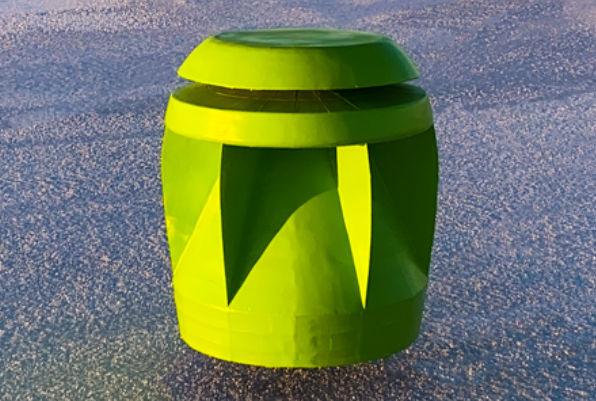Vertical Axis Wind Turbine (VAWT) Project
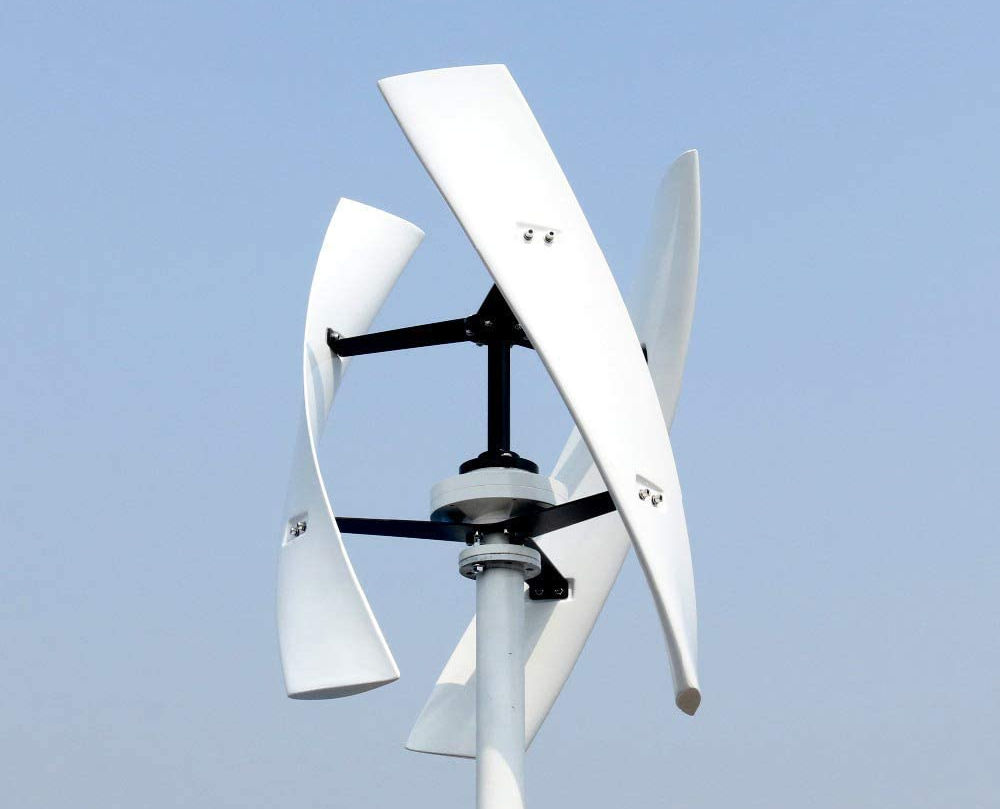
With my smart home solar energy progressing well, my focus turned to the coming winter and how best I could fill in the gaps in my smart home energy management project. The obvious solution to complement our solar panels is a wind turbine. It will add another energy generation source that can help fill in the winter deficit.
My original thinking was that I could build a fairly small scale VAWT (1m tall × 1m wide) and get a decent power output from it. I set this limitation because I currently live in a fairly urban environment. I was hoping for about 1kW peak. I was quickly brought down to earth by those more experienced than me and have reset my expectations to something closer to 250W peak. This is not a problem for me though and I'm still working on the assumption that something of this size would fill a useful gap in my solar energy generation (especially if there was two of them) and allow me to learn enough to scale my designs up for a new build in a more rural location.
Objectives
My primary goal with this project is to learn more about wind turbines. It is certainly not just about the money. I'd like to understand how well they work, how reliable they are and to use my learning to see what part they might play in my next "off grid" home. My focus is on a Vertical Axis Wind Turbine (VAWT) and not a Horizontal Axis Wind Turbine (HAWT), simply because I don't have the ability to install a HAWT at my current home and it is not the right environment for this kind of wind turbine to work effectively.
At the end of this project, I just want to be able to answer one simple question: Will one or more vertical axis wind turbines add anything useful to my current solar energy installation?
Research
When I started this project, I knew absolutely nothing about VAWTs. So I started right at the beginning with a Wikipedia page and realised they come in two flavours:
- Savonius - collects the wind in cups dragging the turbine around.
- Darrieus - uses lift forces generated by the wind hitting aerofoils to create rotation.
And then I came across these two YouTube videos, which I found really educational:
- Engineering With Rosie - Are Vertical Axis Wind Turbines Better?
- Engineering With Rosie - Vertical Axis Wind Turbine Aerodynamics and Design
Power
The easiest way to get a realistic view of wind turbine power output is by using a Wind Turbine Calculator. For some context, my proposed reference design is 1m tall × 1m wide and this would produce about 175W in a 10m/s wind. Whilst this doesn't sound much, two of these would produce 350W, which is more than the baseline electricity usage of our home. It all helps!
Generating higher voltages means the wires have to carry lower currents. This prevents losses in the cabling but, there comes a point where the voltages become dangerous. My preference is around the 36V to 48V mark.
Wind Direction & Speed
In our garden, the wind seems to mostly come from one direction (the West). Since a VAWT is omni-directional, this is not really an issue but it does mean that location is more important.
Wind speed is crucial to generating power and is usually measured in meters per second (m/s) but, most people in the UK are more familiar with mph. 10m/s = 22.4mph.
Turbine Location
The most exposed part of our property is the bottom of the garden, which has fairly clear views out to the West. The nearby buildings act as a funnel for the wind, making it stronger than it really is. There is also a noticeable funnelling effect down the East side of our home, again caused by the location of the buildings around us. Ordinarily, an urban environment would be considered sub-optimal but, with careful location of the turbines, I think it might actually work in my favour. Time will tell.
Experimentation
I have an anemometer connected to my contextual smart home, so I have wind speed measurements going back quite a few years. This should allow me to predict some typical monthly energy generation figures, for a given wind turbine size and efficiency.
One option I'm looking at is to double up my blades vertically with counter-rotating blades, to create a VAWT that is then 2m tall. This has the effect of effectively doubling the wind speed but, it adds complexity because both the magnets and coils are now rotating.
Scale Models
My plan is to create 1/10th scale models of my various designs, which will generate energy and allow side-by-side comparison of my designs. These will be a maximum of 10cm tall and a maximum of 10cm in width and all use the same generator hardware. Both will be mounted on the top points of a rotating T structure, which always faces into the wind, to ensure they don't interfere with each other. My scale models all rotate on a 6mm spindle, mounted on bearings. This makes the comparisons more consistent.
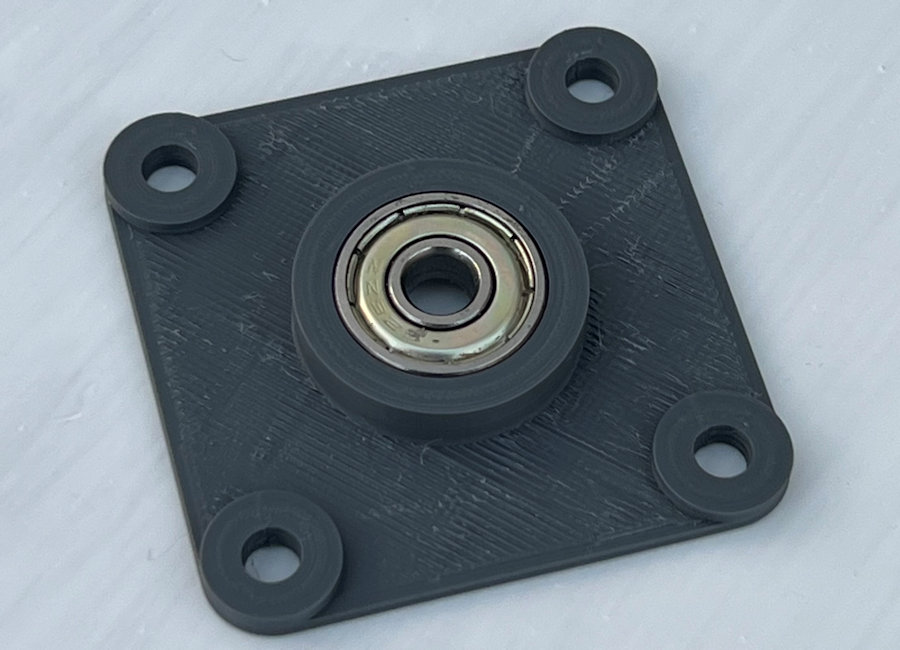
This is my 3D printed top bearing mount.
A smart home connected Arduino will measure the power output into a fixed load, so I can compare the efficiency of two blade designs at a range of wind speeds.
Scale Model Generators
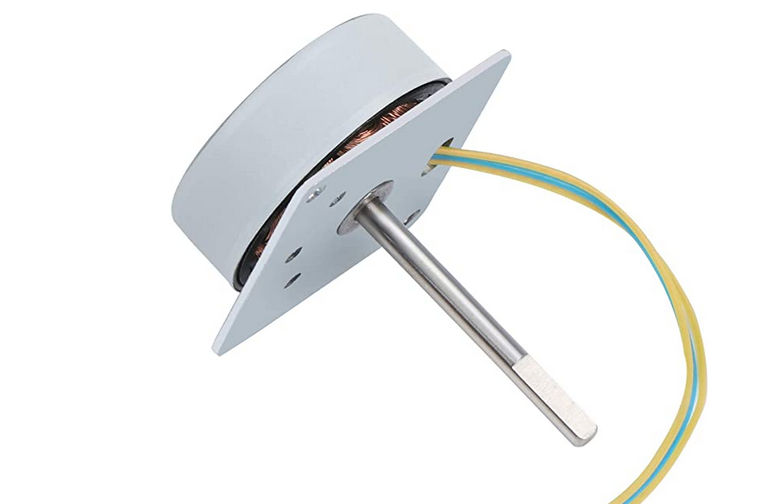
To collect and measure the energy from my scale models, I bought this tiny 3-phase generator. It's just 30mm × 30mm but, I wanted to be sure my model blades could spin it. I built a 3-phase rectifier and used a fixed resistance load. By measuring the voltage across the load, I can then see how much power it is being generating. It has a 3mm shaft, so I'm using a 3mm to 6mm coupling to connect my blade design to the generator.
I initially tested this generator using a cordless drill and saw 3.8Vdc, which was much less than I expected. With a bit more speed, I got this up to 24V dc using a 150Ω load resistor, which means the output was about 3.7W. The resistor was getting quite warm. For something so tiny, this is not too bad. This means I need a 5:1 voltage divider in order to use an Arduino analogue port to measure the voltage, as it accepts a maximum of 5V dc.
Data Logging
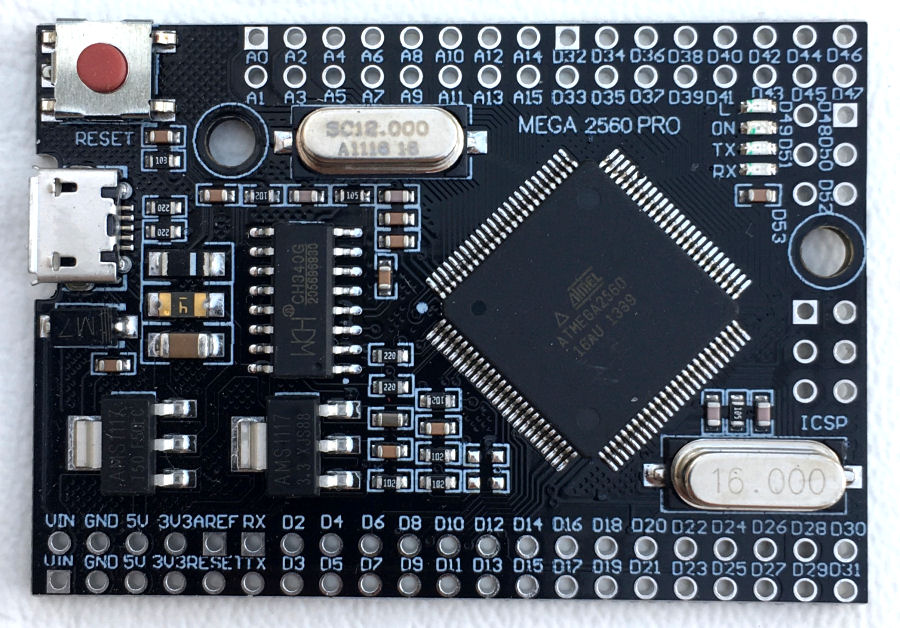
All of my models and experimental VAWTs will be connected to an IP-networked Arduino Mega 2560 Pro, which will capture performance and environmental data. These tiny little processors are incredibly powerful and have loads of digital and analogue inputs. I've developed my own Power over Ethernet (PoE) board to network them and power them at the same time.
For each one, I plan to log the following every 60 seconds:
- Rotational speed
- Average energy generated
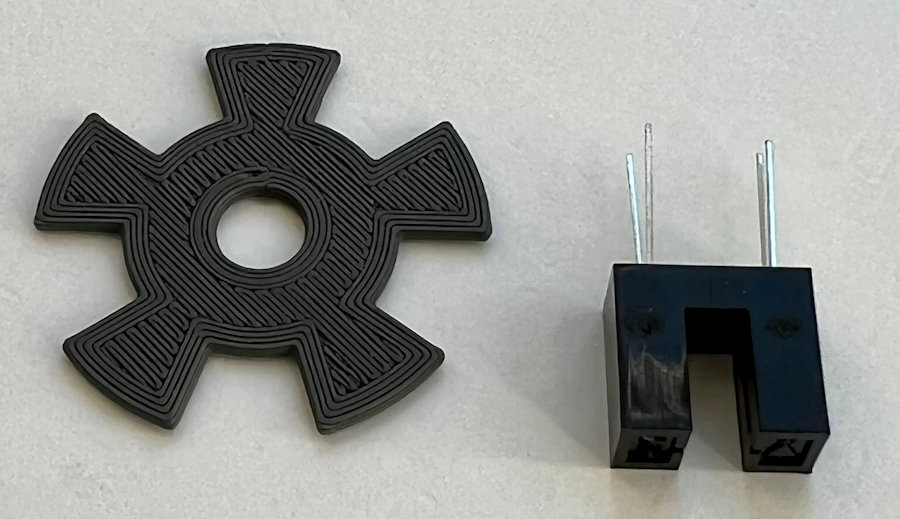
A 3D printed slotted wheel is fixed to the vertical axle and an optical slotted sensor is used to measure rotational speed. This uses Arduino interupts to count the pulses over a fixed period of time.
3-Phase Generators
When I started this project, my plan was to focus on the blade designs only and to use off-the-shelf generators. The more I looked at them though, the more distrusting I became of the specifications for these products. As well as having the right voltage, they also need to produce decent power at a relatively low rpm. I'm rapidly coming to the conclusion that this element of my wind turbines needs to form part of this project as well.
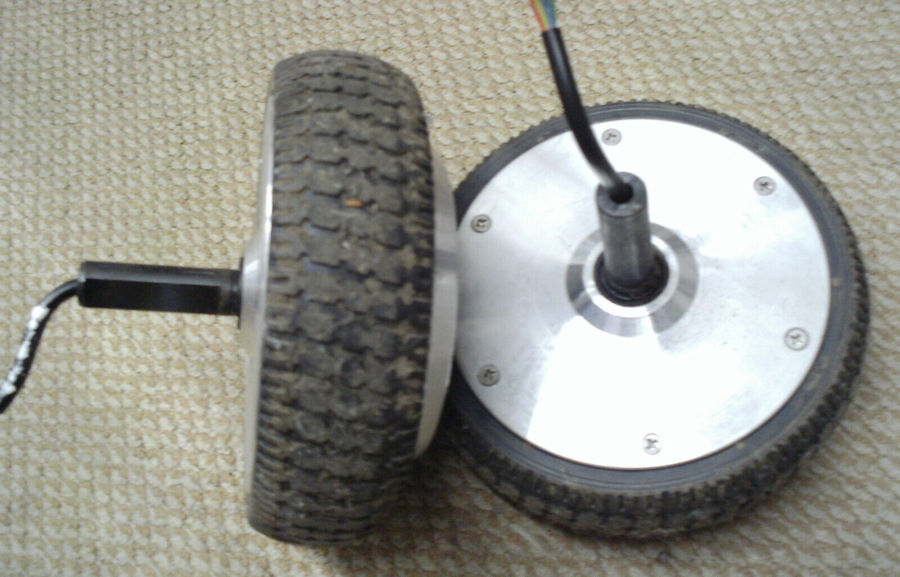
For my VAWTs, I initially plan to try some hoverboard motors. I have purchased two to test for just £12. Some people claim to get as much as 350W from these motors but, we shall see.
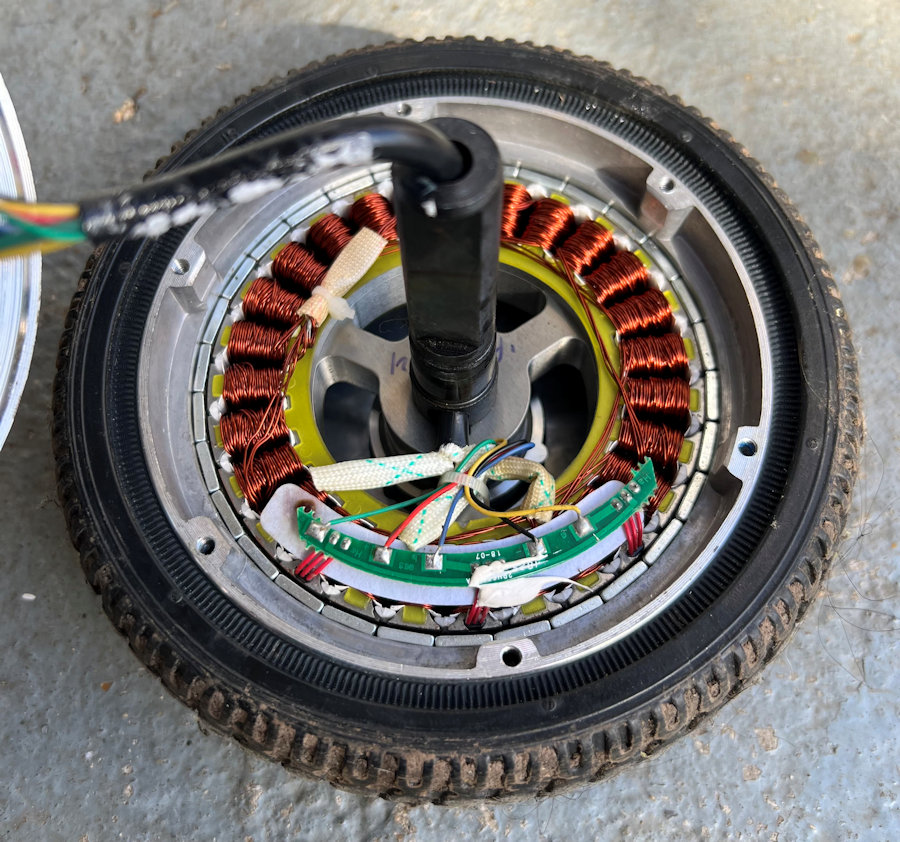
Undoing the cover screws, allows the inner plate and bearing holder to be removed, to reveal the inside. The 3 larger wires are for power and the others appear to be some kind of positioning system.
Opening the motor up shows that there is plenty of room to bolt a boss to the outer face by drilling and tapping some holes into it. I will 3D print a guide to enable this.
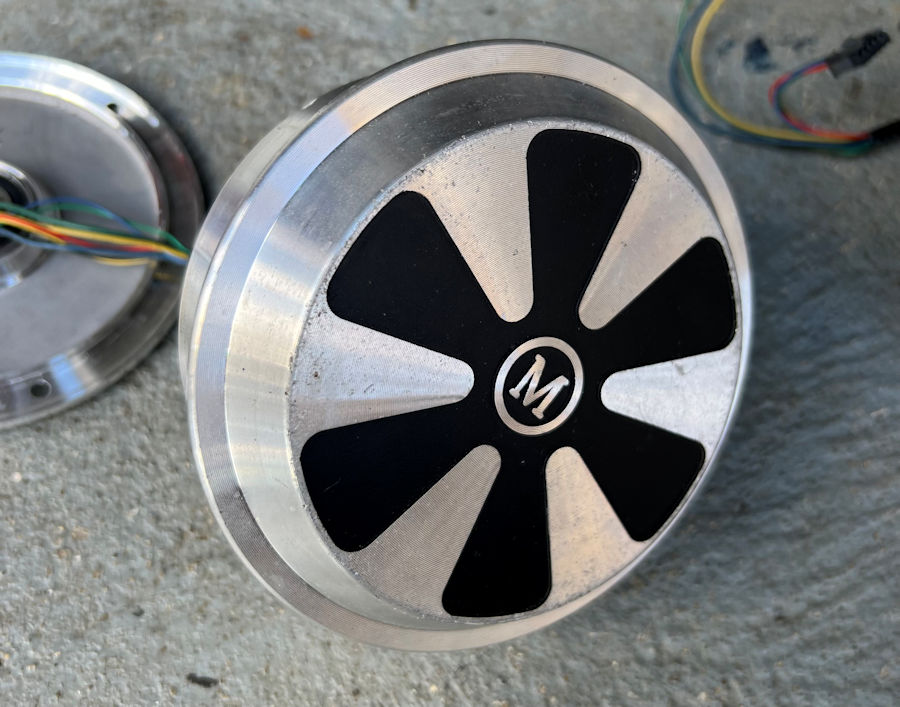
I simply used a sharp knife to cut through the tyres and removed them. I'm going to need to attach my turbine to this outer face. There is some space behind it for through bolts though, so long as I get the PCD correct.
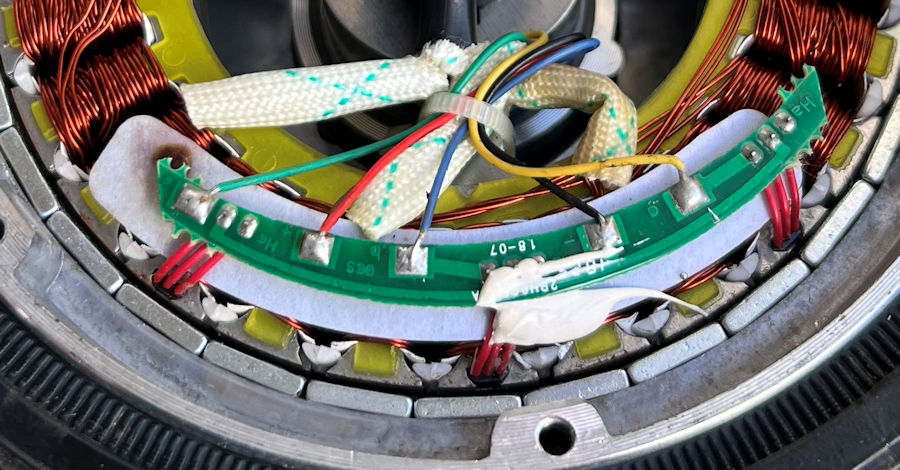
This small PCB inside the motor is there to connect 3 hall effect sensors, to allow the board to track how the wheel is moving. Many people remove it but, I want to use one of the sensors to track rotational speed.
The PCB has nice clear labels on it which makes it really easy to see what is going on:
- Black = GND
- Red = +V (I'm using 5V dc)
- Yellow = Output a
- Blue = Output b
- Green = Output c
The outputs of the hall effect sensors are pulled to ground when a magnetic field is applied, so by connecting an LED in series with a 1KΩ resistor to each output, I was able to see how they behave when the wheel is rotated. Each sensor is triggered 16 times for each complete revolution of the wheel. I've connected one up to an Arduino and I can now measure the rotation speed (rpm).
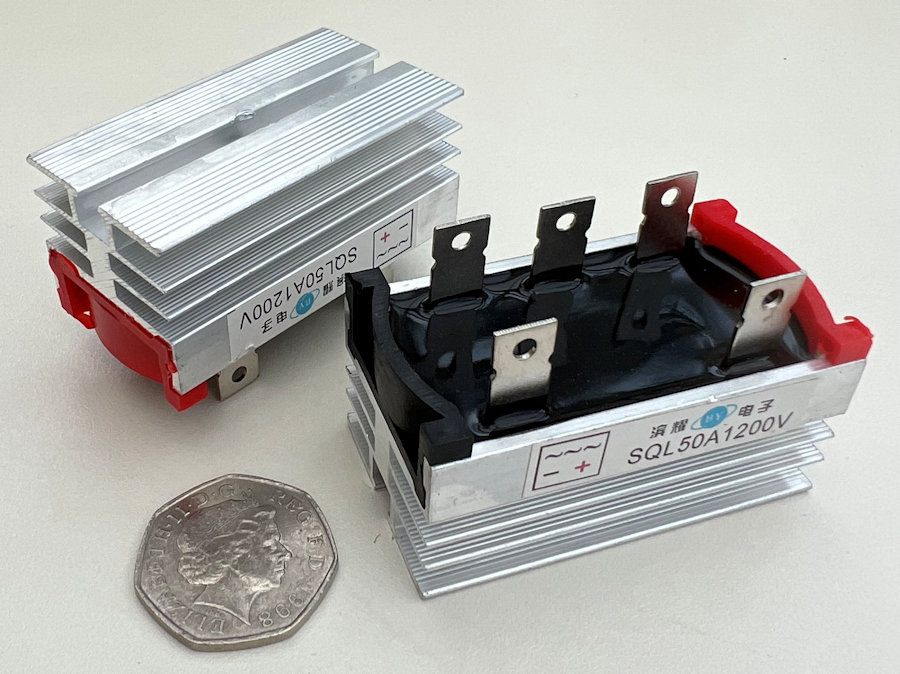
I'm using these high-current 3-phase rectifiers to get a dc voltage from the hoverboard wheel motor. They have 8mm spade connections.
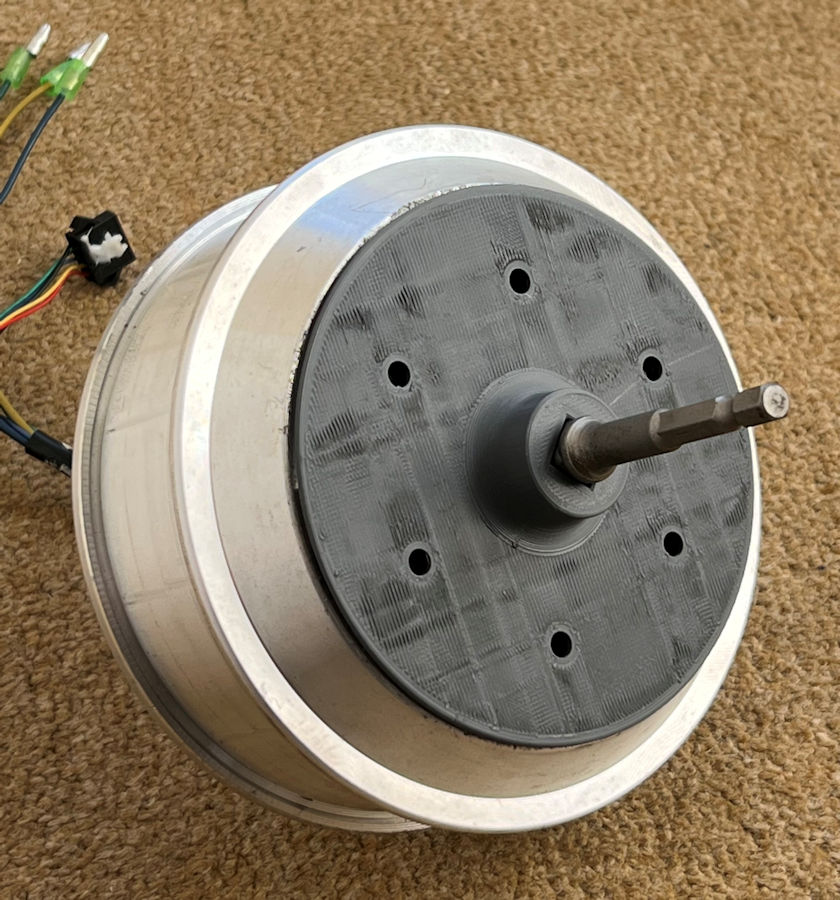
In order to spin the motor and test its power ouput, I've 3D printed this boss. It's fixed using double-sided tape for now but, the plan is to bolt something similar through the front face going forward. When I tested the generator with a load, I got close to 200W and then my boss self-destructed.
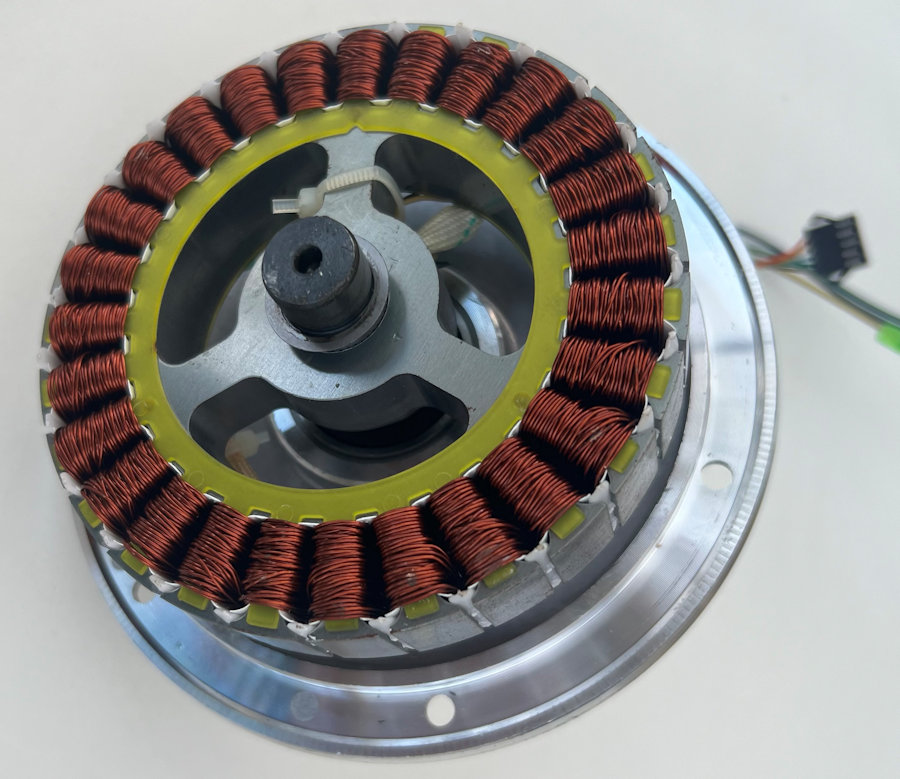
I separated the wheel hub from the stator, in order to drill some proper mounting holes.
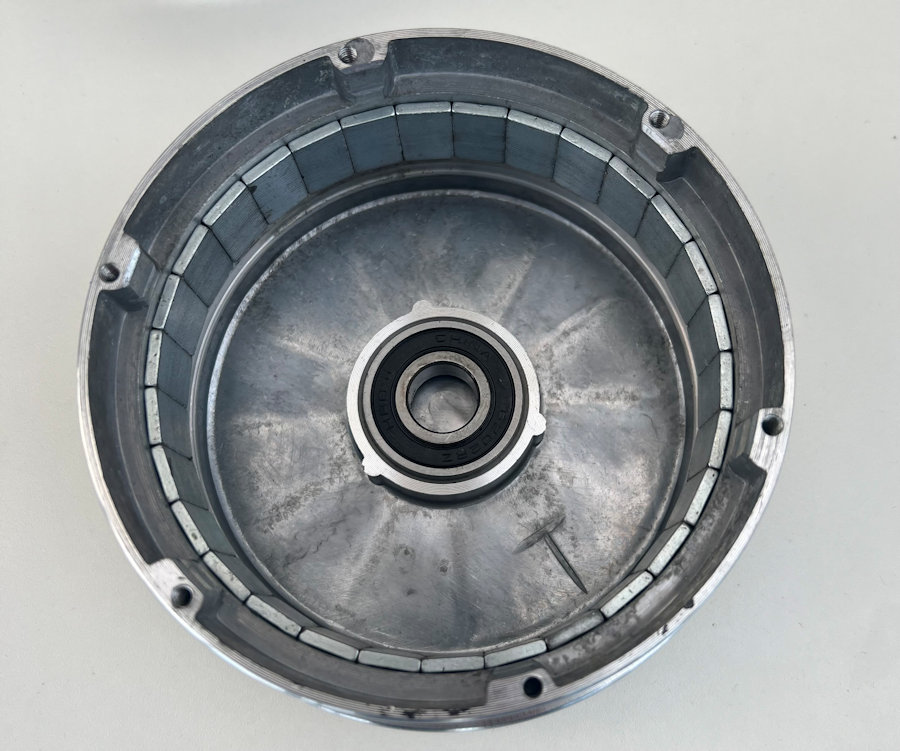
With the hub removed, I could work out where best to drill some 6mm holes to bolt the wheel hub to the turbine. The central bearing mount is about 42mm in diameter and the wheel is 102mm in diameter. I settled on 6 × 6mm mounting holes at 80mm PCD.
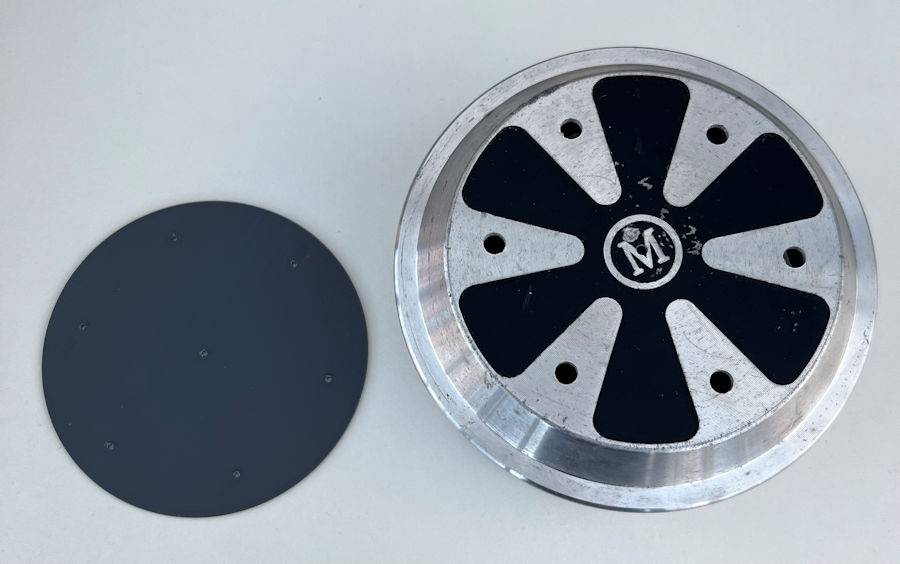
I 3D printed a template to allow me to accurately drill the mounting holes, starting with a 1mm drill bit and then drilling them out to 6mm.
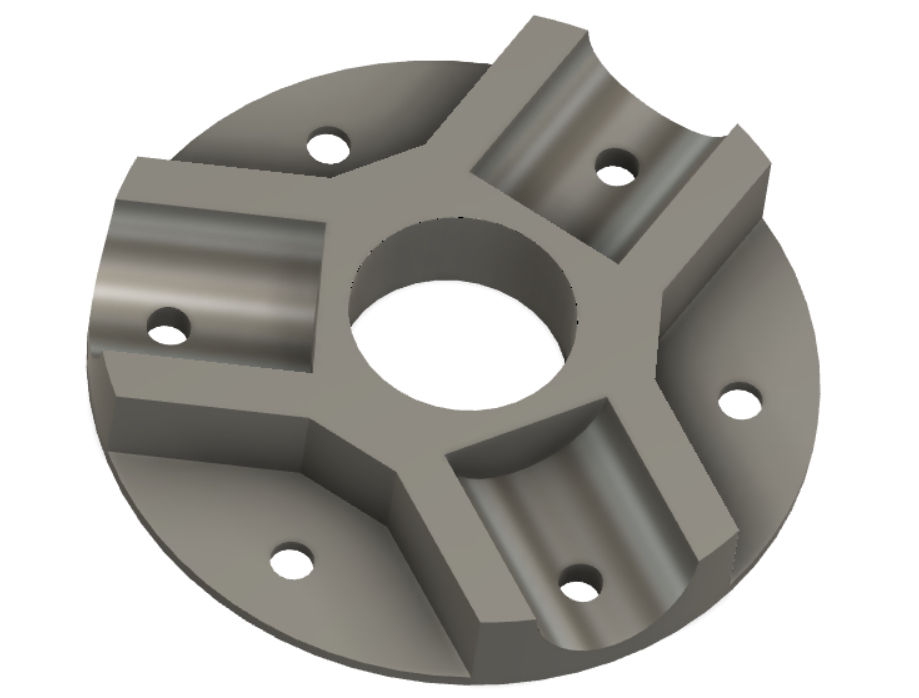
Designed a 2-part mount to fix three blades to my hoverboard motor using Autodesk Fusion 360. It holds 3 arms, each 25mm in diameter for a Darrieus design. This approach allows me to experiment with different arm lengths and blade designs. Download the STL file.
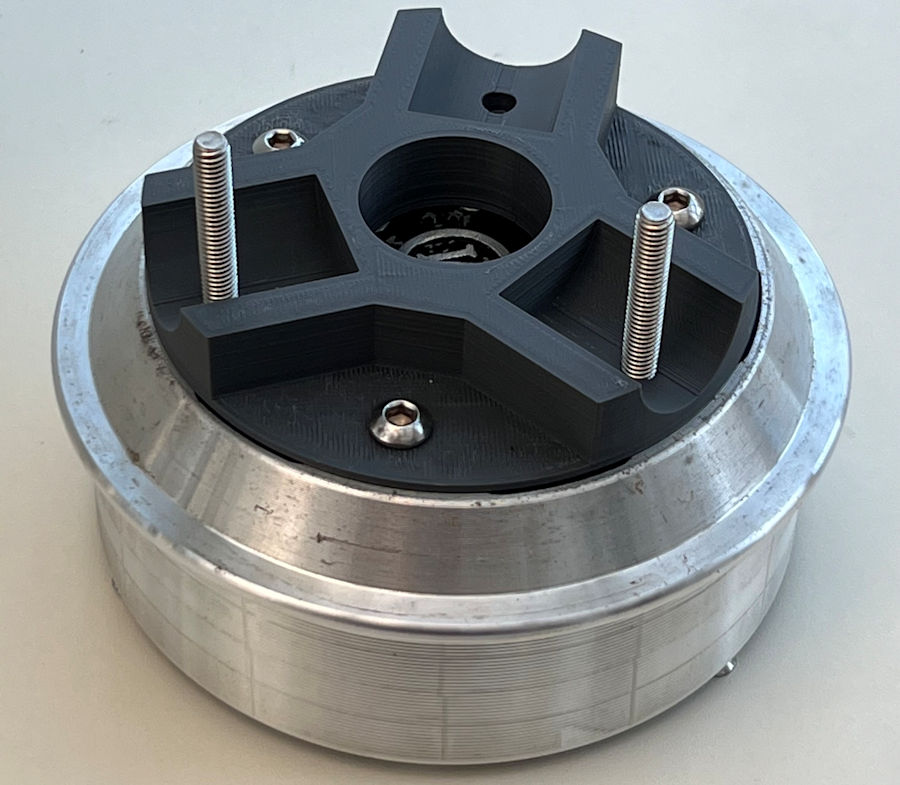
Maximum Power Point Tracking (MPPT)
The reason that I'm using an Arduino to measure the rotational speed and the energy output is so that I can implement Maximum Power Point Tracking (MPPT), to maximise the power generated by my wind turbines. My software will learn what the optimum speed is to maximise the power ouput and use Pulse Width Modulation (PWM) to vary the load and ensure the optimum rotational speed and hence power output is maintained.
My Designs
1 - Basic Savonius
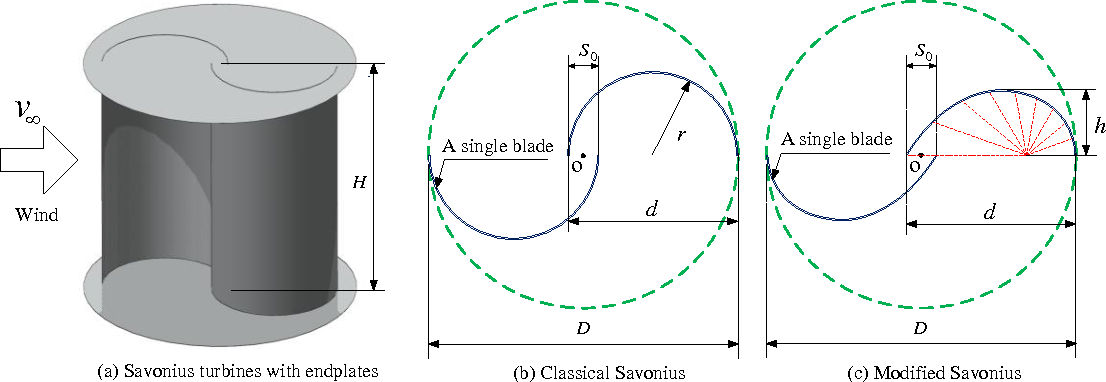
I'm starting with something simple and robust to act as a baseline. Because I'm 3D printing my models, I will optimise the design slightly based on this report.
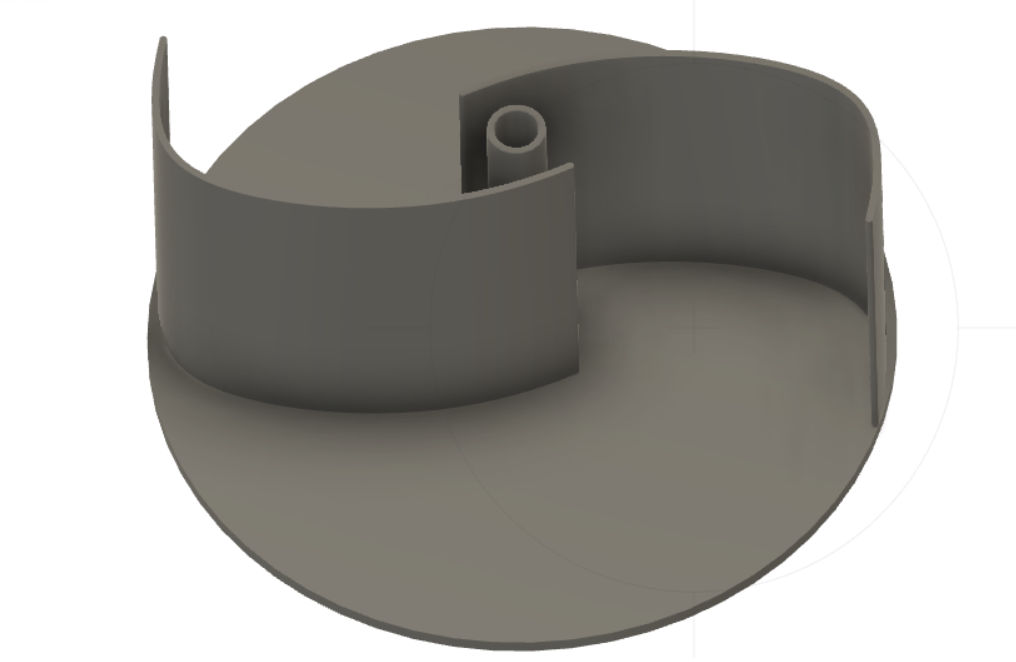
The plan is to design this blade in two parts and 3D print it. This is the lower half.
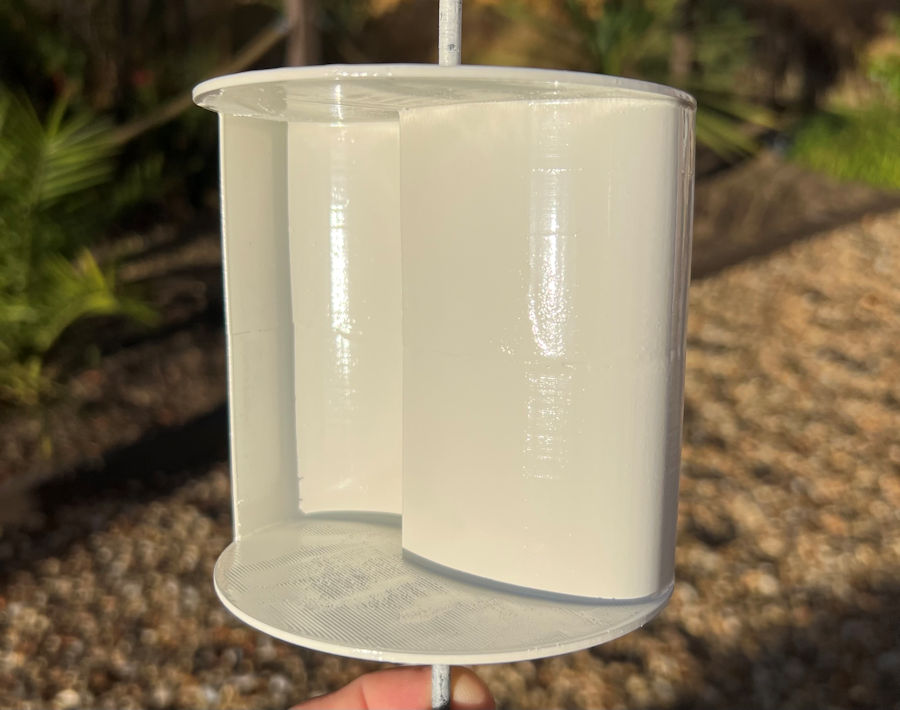
The two parts were 3D printed (each one took about 4 hours and 20 minutes), then glued together and spray painted.
2 - Benesh Savonius
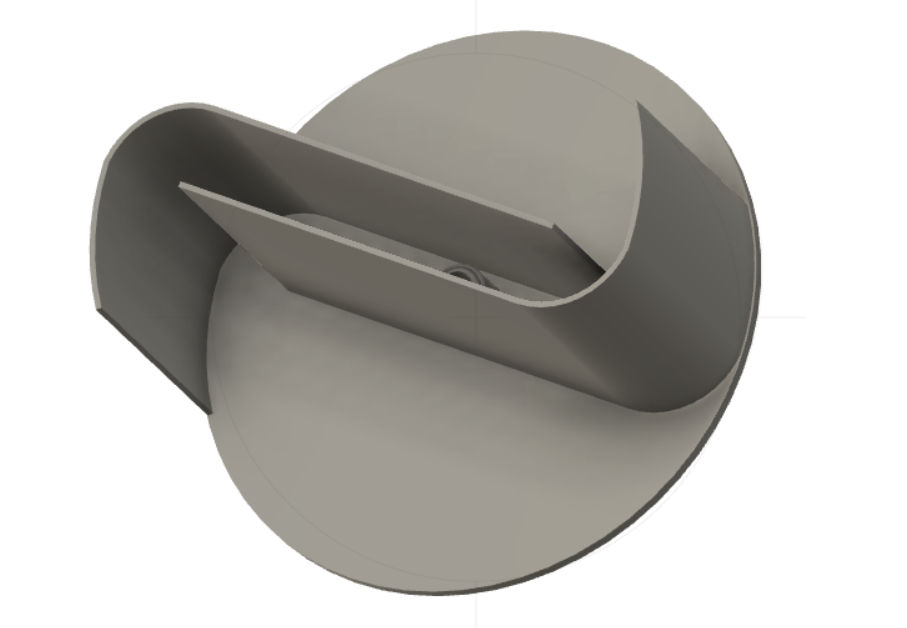
This the 3D design for the lower half of my second model, which is based on this patented Benesh design. The top and bottom parts took 4 hours and 45 minutes to 3D print.
Commercial Products
As well as experimenting, I'm always looking at commercial products to potentially purchase, trial or simply for inspiration. It would be really good if I could do some side-by-side comparisons with my own designs, once they are completed.
Halcium PowerPod
IceWind
LuvsSide
Ventum Dynamics
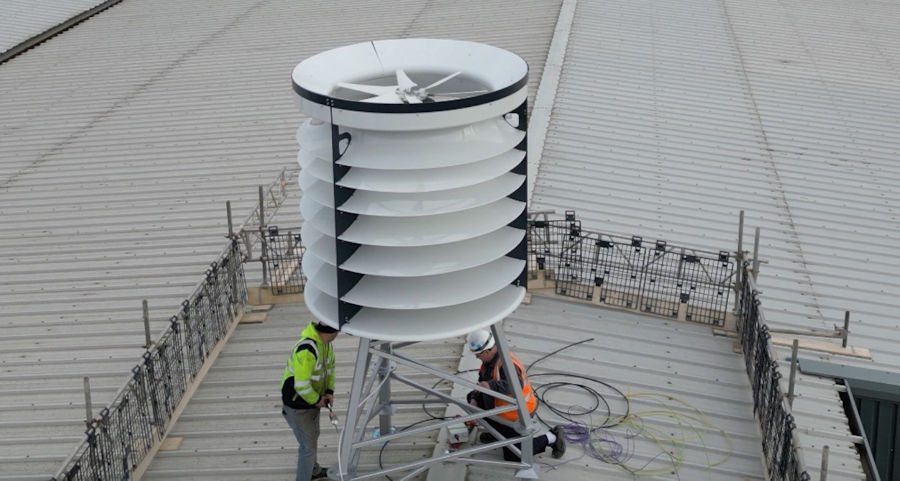
Ventum Dynamics is a Norwegian company producing a ducted VAWT. The claimed power outputs are peak output of 1500W in a 13m/s wind for their 2m diameter version. These are curently in trial in a number of places in the UK, including Lincolnshire
If you found this page useful you can buy me a coffee. This helps me maintain this website and add more content.
